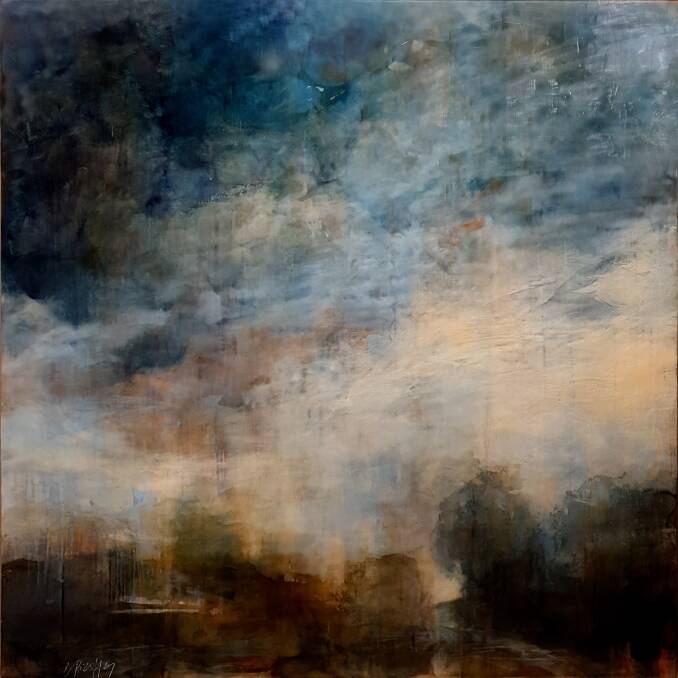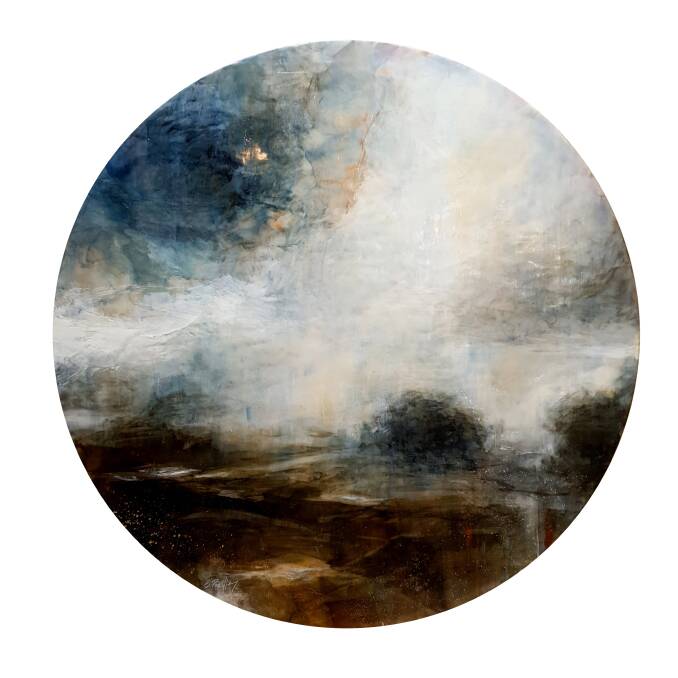
Liz Priestley: The Romantic's View. Grainger Gallery. Until October 2. graingergallery.com.au.
Subscribe now for unlimited access.
or signup to continue reading
The title of this exhibition - The Romantic's View - provides both entry and clues to the artist and her approach to her subject.
The 23 works, all encaustic and variously on birch panel or paper, follow resolutely in the path of the 18th- and 19th-century artists and poets who comprised the so-called Romantic movement.
These figures established the primacy of the individual creative imagination and the value of the individual's inner life in forging a responsive aesthetic language, a language that exhorted the subjective and personal over the objective and universal.
The then-new creative directions pursued by such artists as J.M.W. Turner, John Constable, Eugene Delacroix and Caspar David Friedrich (amongst countless others) put in place creative reverberations clearly still in force today.
Romanticism is not just a historical phenomenon. Its influence has lingered over time and the hegemony of the individual imagination remains a sine qua non of contemporary visual arts practice. Liz Priestley's self-proclaimed adherence to a Romantic worldview is clearly posited in The Romantic's View.
The exhibition's works as a whole present as a celebratory hymn to the artistic imagination and to the continuing presence of the natural world as the "proper" vehicle to give free rein to that imagination. Priestley lives in rural northern New South Wales where the natural environment is an insistent and constant presence, simultaneously site for repose and meditation and fertile source for her imaginative confections.
The wide horizons of the Australian bush skies provide inspiration and impetus but both of these are informed by an insistent understanding and acceptance of the exemplars of her Romantic forebears, Turner and Constable.
While the presence of their work in Priestley's own is clear, it is a presence that is about understanding and acknowledgement rather than one of acceptance. Priestley acknowledges the infusion of art historical precedents not merely as august progenitors but as artists whose approach to and understanding of the motif embrace her own.

While the subject of each of the works displayed is ostensibly the landscape in various iterations, it could also be said to be the atmospherics of place and the opaque oscillations of place in the artistic memory. The works are as much meditations on the idea of place and its impact on the creative imagination as they are about actual topographical entities.
The preceding is a fluid and fugitive notion and one that escapes concrete definition. Its deliberate inchoateness requires an appropriate medium and for Priestley that is found in her use of encaustic. This mixture of wax and paint (oil) proffers a rich and lush surface whose depth implies a process of layering in a formal sense and correspondingly in a philosophical and imaginative one. Viewers are invited "into" the artist's creative processes and hence into her syntheses of place, observation and memory.
Priestley's understanding and control of her medium allows her to create immersive spatial configurations in which recessive depth while present, is intimated rather than delineated. The use of a low or (almost) non-existent horizon is a compositional characteristic used by the artist to great effect. The resultant atmospheric accumulations become immersive spaces, simultaneously embracing and full of metaphorical possibilities. Twilight Dreams, The Mysteries and the suite of Cloud studies beautifully exemplify this.
I have mentioned the fluid and fugitive qualities of the encaustic medium in both formal and imaginative sense. The infusion of these into the works imbues an almost spectral quality into much of the landscape motif as depicted. The landscape for Priestley, while vehemently her thematic source, is a "presence" redolent of the creative imagination as much as a physical place. The elision of the real and the poetic, the physical with the imaginative finds beautiful expression in this carefully wrought exhibition.
We've made it a whole lot easier for you to have your say. Our new comment platform requires only one log-in to access articles and to join the discussion on The Canberra Times website. Find out how to register so you can enjoy civil, friendly and engaging discussions. See our moderation policy here.
Our journalists work hard to provide local, up-to-date news to the community. This is how you can continue to access our trusted content:
- Bookmark canberratimes.com.au
- Download our app
- Make sure you are signed up for our breaking and regular headlines newsletters
- Follow us on Twitter
- Follow us on Instagram

